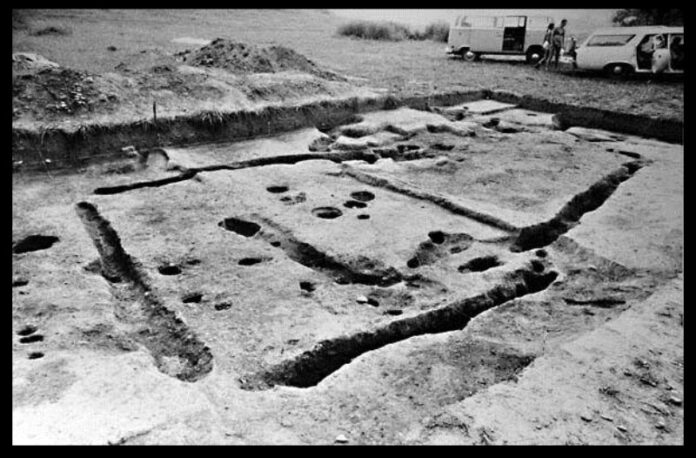Buried under 12 earthen mounds that lie in a deep bend in the Harpeth River in Cheatham County lies what is left of a civilization from the Mississippian period of Native American civilization that existed between 1000 and 1350 CE. Although Mound Bottom was first listed on the National Register of Historic Places in 1971, there are sketches of the site as far back as 1878 and early settlers to the area wrote in journals of seeing remnants of some of the original fortifications. Unfortunately, for almost 100-years parts of the site were farmed, destroying some of its structure. Recently, the Tennessee Division of Archaeology received a grant from the Tennessee Historical Commission to conduct new field research to better understand the site and to support preservation efforts to provide a clearer interpretation of its historic meaning.
According to the State of Tennessee website, “Geophysical survey and remote sensing data reveal that Mound Bottom was not a vacant ritual center, but that instead structures or residences were present throughout the site, including around the base of the mounds.” These findings are some of the newer research going into reinterpreting the site.
Archaeological research on the site has shown that the founders of the Mound Bottom location probably came from a major Mississippian settlement near St. Louis, Missouri called Cahokia. After initial settlement in the 11th century, Mound Bottom grew to regional importance by taking over smaller settlements probably ruled by local chiefs.
The Native American Association website states, “The site contains 14 mounds surrounding a plaza area, including a large platform mound. This mound probably supported the house of the town leader and/or a townhouse or temple used for civic or religious purposes. Results of archaeological excavations conducted in 1926 indicate that all of the mounds around the plaza supported some type of buildings, possibly the homes of town officials. Most of the people lived in houses arranged in rows outside the mounds around the plaza. The town was enclosed on the north, east, and south sides by a wooden palisade.”
For 300 years, Mound Bottom and the Pack Site, located about a mile away and four times larger, served as the social, political, economic, and religious center for one of North America’s most complex native civilizations.
The Tennessee Encyclopedia states, “archaeological investigations over the past two centuries have demonstrated the trade connections between the ruling families of Mound Bottom and chiefs of similar civilizations: copper necklaces, earspools, and headdresses were imported from the Lake Superior and Appalachian regions; fragile pottery vessels were imported from southern Illinois and the Tennessee River Valley; and conch shell cups and jewelry from the Gulf Coast. Around A.D. 1200, probably few leaders in eastern North America were unaware of the city at ‘Mound Bottom’.”
By 1350 CE, the site had decreased in scope and was eventually abandoned. It is suspected that major climate changes, much like we are now experiencing, brought about the decline of the civilization. A long period of drought possibly created food shortages, ultimately causing political and social instability. Also, there was a move away from mound settlements toward fortified villages.
The site was purchased by the State of Tennessee in 1973 and currently it is an archeological preserve managed by the Tennessee Division of Archeology and it is part of Harpeth River State Park. With protection of the site as the main purpose of the state’s ownership, access is restricted. However, guided tours are possible through the managing organizations and are announced on the Mound Bottom State Archaeological Area Facebook page. There are plans to eventually have an interpretive center and archaeological park.
Historic preservation is vital, especially with the encroachment of development, neglect and the lack of understanding of a place’s cultural significance. With more emphasis on diversity, there is more awareness of the need to save more diverse sites in order to learn about the history of all peoples and both sexes when studying the past of the state and the entire country.


























